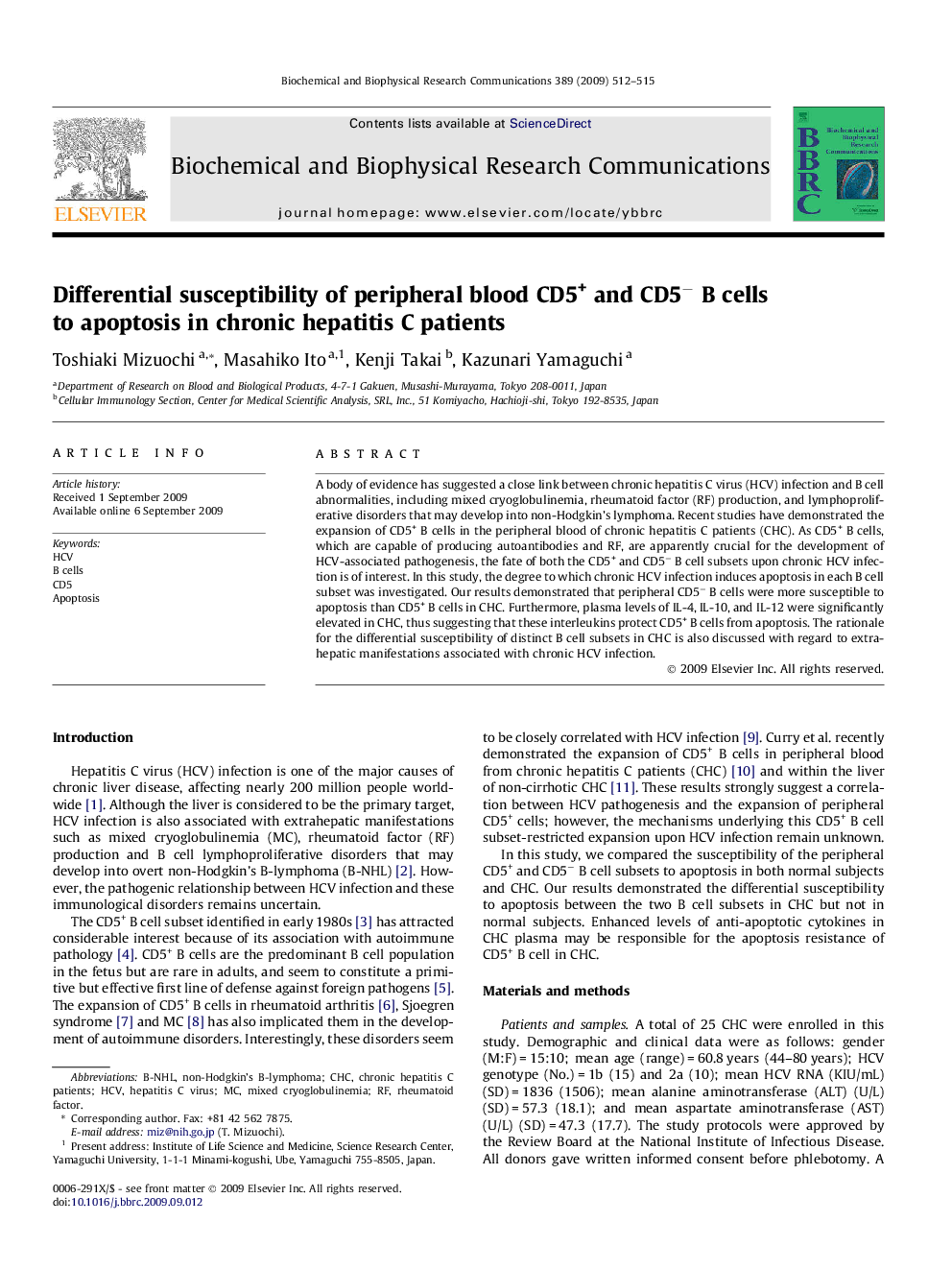| Article ID | Journal | Published Year | Pages | File Type |
|---|---|---|---|---|
| 1933537 | Biochemical and Biophysical Research Communications | 2009 | 4 Pages |
A body of evidence has suggested a close link between chronic hepatitis C virus (HCV) infection and B cell abnormalities, including mixed cryoglobulinemia, rheumatoid factor (RF) production, and lymphoproliferative disorders that may develop into non-Hodgkin’s lymphoma. Recent studies have demonstrated the expansion of CD5+ B cells in the peripheral blood of chronic hepatitis C patients (CHC). As CD5+ B cells, which are capable of producing autoantibodies and RF, are apparently crucial for the development of HCV-associated pathogenesis, the fate of both the CD5+ and CD5− B cell subsets upon chronic HCV infection is of interest. In this study, the degree to which chronic HCV infection induces apoptosis in each B cell subset was investigated. Our results demonstrated that peripheral CD5− B cells were more susceptible to apoptosis than CD5+ B cells in CHC. Furthermore, plasma levels of IL-4, IL-10, and IL-12 were significantly elevated in CHC, thus suggesting that these interleukins protect CD5+ B cells from apoptosis. The rationale for the differential susceptibility of distinct B cell subsets in CHC is also discussed with regard to extrahepatic manifestations associated with chronic HCV infection.
